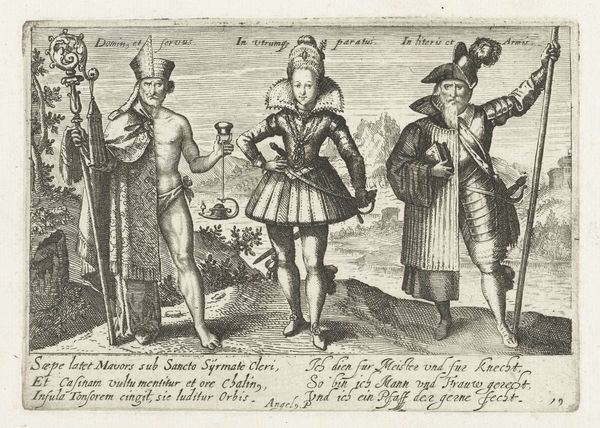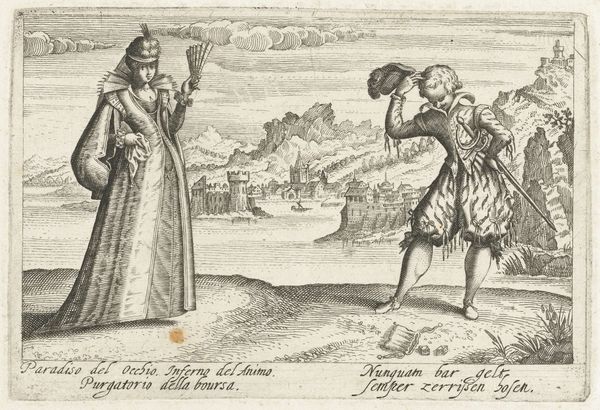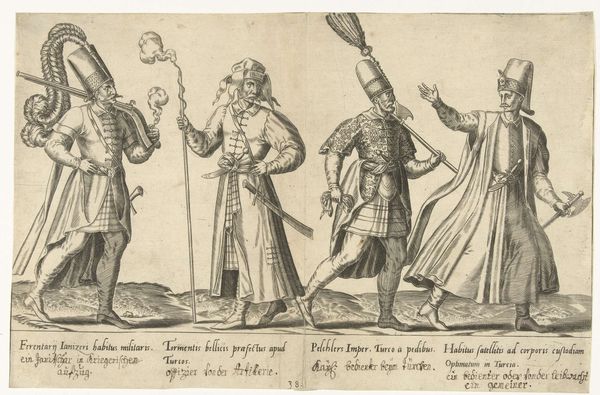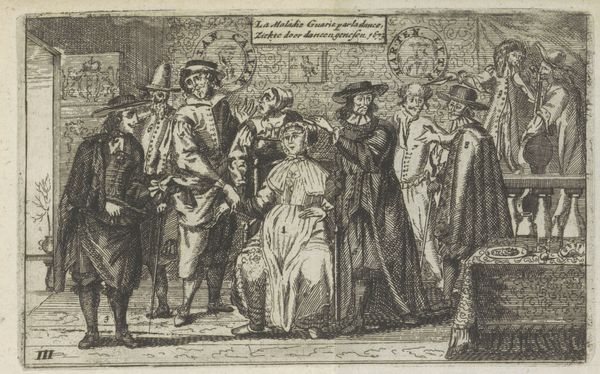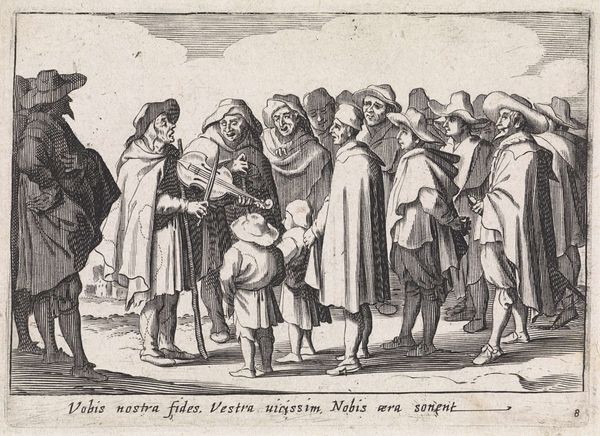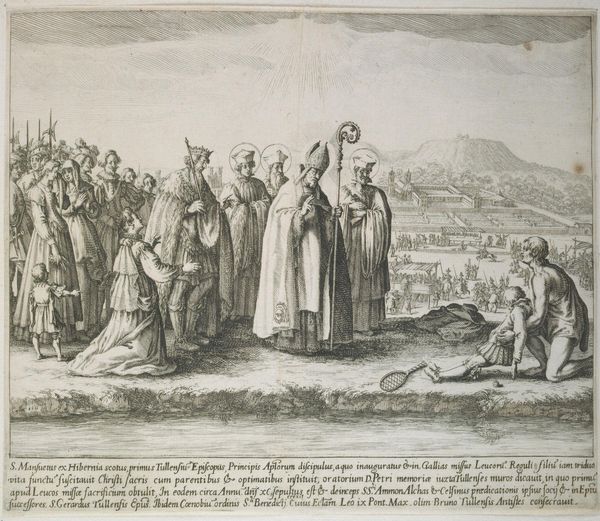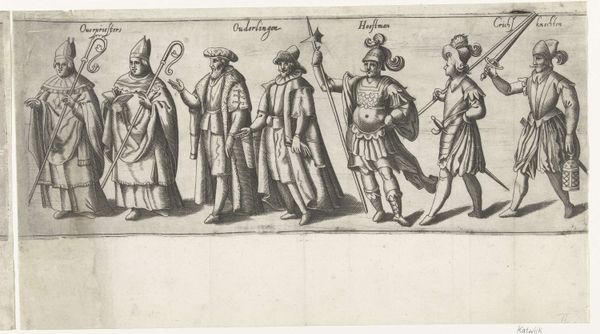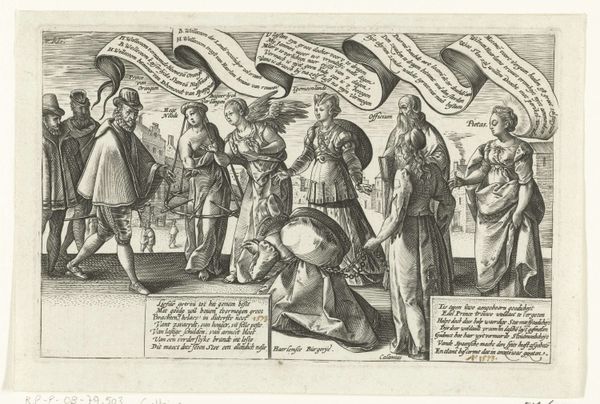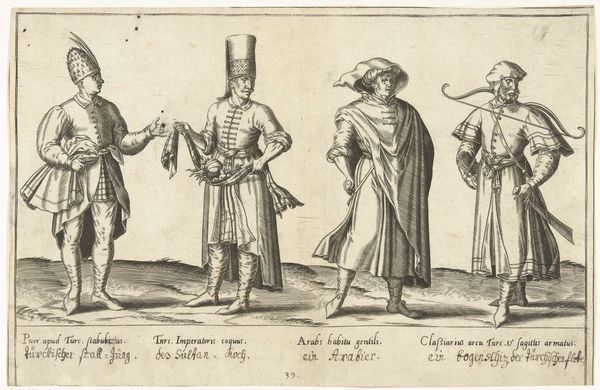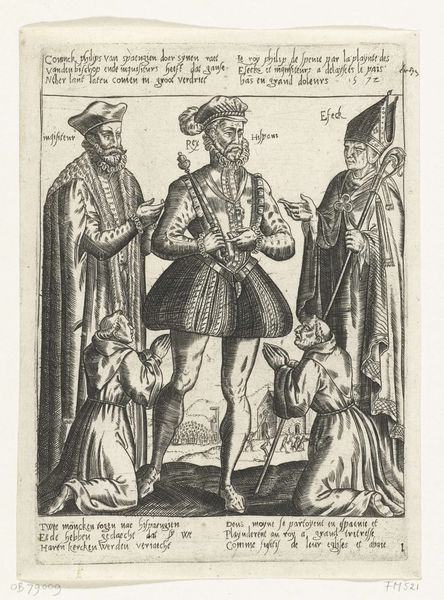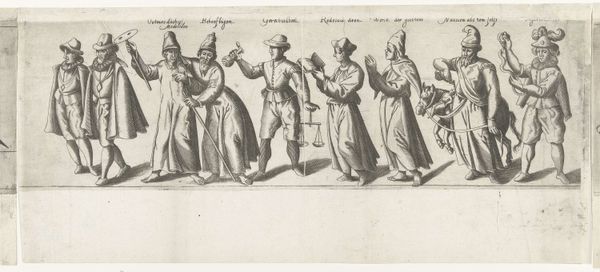
print, engraving
#
baroque
# print
#
old engraving style
#
figuration
#
genre-painting
#
history-painting
#
engraving
Dimensions: height 97 mm, width 138 mm
Copyright: Rijks Museum: Open Domain
Editor: This engraving, "Leeftijden van de man," or "Ages of Man," created in 1608 by Jacob van der Heyden, portrays the progression of life, but there’s almost a cynical undertone, don’t you think? What strikes you most about its historical and cultural significance? Curator: Well, let's consider this through a lens of social power structures. The very depiction of aging as a linear decline subtly reinforces ableist narratives, doesn't it? How might contemporary feminist theory, for example, challenge the heteronormative presentation of the first couple and critique the diminishing presence—literally, shrinking figures—of the male subject over time? Editor: I see what you mean about the diminishing presence; it’s almost like aging equals erasure. But how much of that is artistic convention, and how much reflects a true societal bias? Curator: It’s precisely that intersection we need to explore! Engravings like these weren’t just aesthetic objects, they actively shaped social perceptions. What philosophical frameworks could we use to deconstruct the notion of a "prime" or "peak" of manhood as presented here? Consider the layers of patriarchal structures informing van der Heyden’s choices. Editor: So you are saying we should focus less on the surface-level depiction of aging and more on deconstructing the societal values it implicitly promotes? Curator: Precisely! It encourages critical inquiry into the artwork's role in either perpetuating or challenging normative concepts surrounding identity and power. The key is dialogue—historical context intertwined with contemporary criticality. Editor: This really broadens how I view art history! It's not just about the past, but about actively questioning how that past continues to shape the present.
Comments
No comments
Be the first to comment and join the conversation on the ultimate creative platform.
